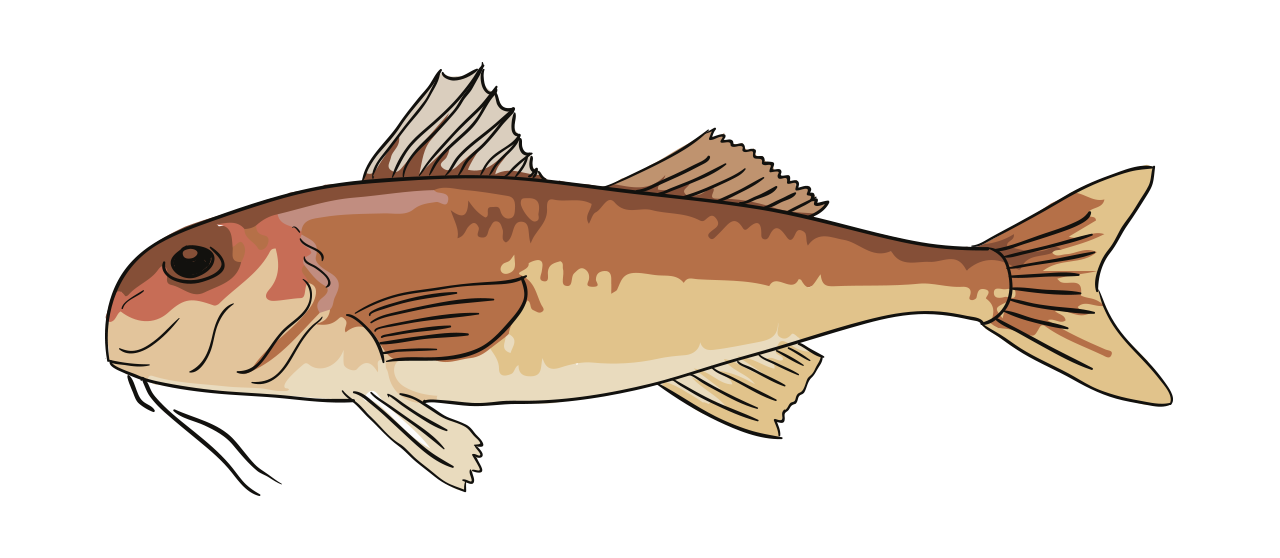Red Mullet | Fish Species Guide | Angling Direct

Red Mullet
aka Mullus surmuletus
Distantly related to the grey mullet species, the red mullet has a steep sloping head with large eyes and a tapered red body with yellow lines on the upper flank. Found in the south and south-west waters of UK and Europe, into the Mediterranean water, red mullet feed along the seabed. The fish sports 2 sets of dorsal fins and a deeply forked tail and is known for its pair of long, white barbels on its chin as well as its visible scales with a distinctive bright red line along the middle of the body.
Commonly referred to by most of the world as a type of goatfish for its barbels on their chin, similar to the goatee of a goat. These barbs are used instead of the eyes to feel around as they have highly sensitive sensors all over them.
Stats
Status
Habitat
Found over sandy and shingle shelves or in calmer open water.
Bait
Crab or worm baits.
Native or Invasive
Native
Where
Rare in the UK and European waters but when they do appear they can be found around the south of the British Isles.
 Catch Experience
Catch Experience
Video
Blog Highlight
The Ultimate Buying Guide for Sea Anglers - What Equipment Do You NEED to Start Sea or Beach Fishing?
<p>As an island, the UK has plenty of coastlines that provide plenty of opportunities for sea fishing whether it's offshore or beach fishing from the shore. This guide will help you compile the ultimate sea fishing starter kit, covering rods,...
Read More